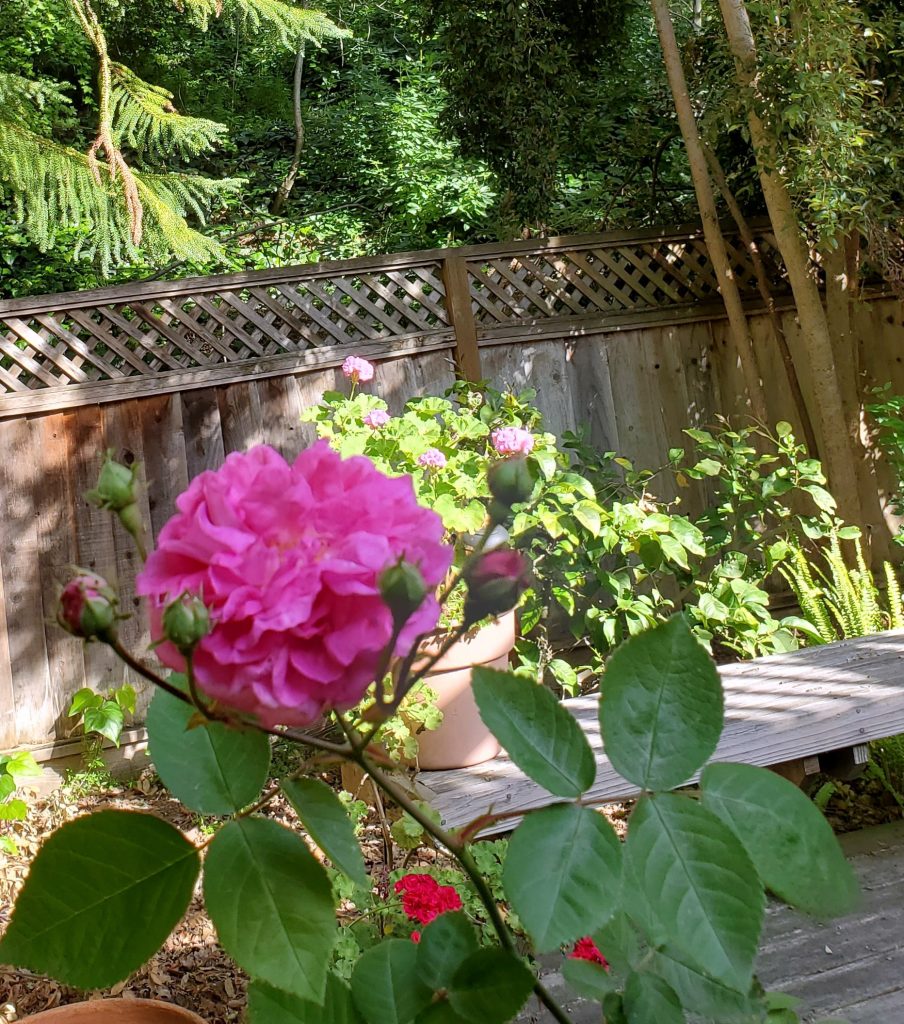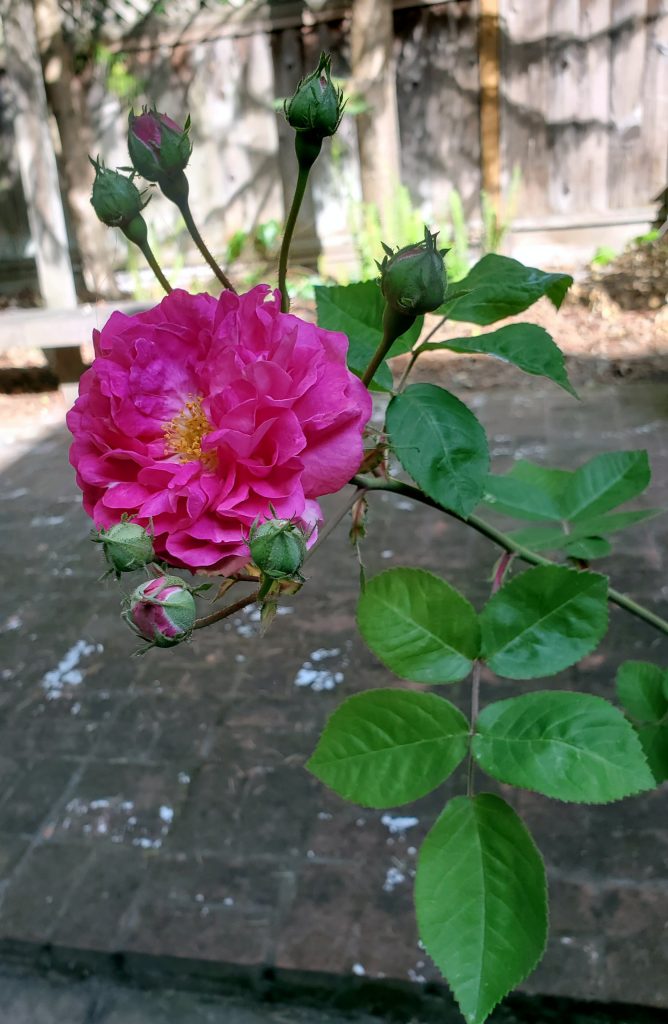
This week, wild roses are blooming in my back yard. Unlike hybrid tea roses, these roses bloom only once a year. And this year, their bright blossoms are all the more precious.
Like the wild rose, life brings us surprises, some welcome, some not. For the past few weeks, people all over the world have been suffering from fear and uncertainty, experiencing the challenge of COVID-19. The virus has brought much suffering and loss, as well as mental health challenges since lockdowns and closures have narrowed our lives. Schools, workplaces, restaurants, theatres, and local shops have closed, familiar routines have been disrupted by lockdowns and social distancing, and each day’s news brings frightening statistics as we worry about how to stay safe.
Cut off from our normal routines, family and friends, there is so much we cannot do. Yet although we cannot go out as we used to, what we can do is go within. In this period of enforced monasticism, we can take the time to read, reflect, and get to know ourselves on a deeper level. Here are two simple but powerful practices to help you find greater hope.
Gratitude. In troubled times, we can become overwhelmed by worry, constantly ruminating on our problems. Psychologist Robert Emmons has found that when facing adversity, gratitude can bring us greater peace of mind and help expand our perspective, (Emmons, 2016). Research has shown that spending time each day to count our blessings, to focus on what we’re grateful for can improve our physical and emotional health (Emmons, 2008; Hill et al, 2013; Petrocchi & Couyoumdjian, 2016).
- At the end of each day, think of three things you’re thankful for. You may choose to record these reflections in a gratitude journal.
- Pause for a moment in the midst of the day to focus on something you’re grateful for. For example, you might smile at someone you love, enjoy the playful antics of a kitten or puppy, or appreciate nature’s artistry in the songs of birds, the beauty of a sunset, or the fragrance of roses in your garden (Emmons, 2008; Carroll, 2017).
Nonviolent Communication. We can find greater peace of mind by applying psychologist Marshall Rosenberg’s nonviolent communication (2005) to ourselves, asking ourselves how we feel and what we need. My friend Juan Velasco and I have been showing people how to do this in our retreats and workshops, now offered online.
To open the way to greater hope, you can take a slow mindful breath, then slowly exhale and keep breathing slowly and deeply as you ask yourself these three questions:
- “How do I feel?”—”Am I calm, relaxed, anxious, confused, worried, tired, hurt, disappointed, sad, lonely, excited, happy”—or something else? Whatever you feel, just recognize and label the feeling without judging yourself.
- “What do I need?” Our needs can range from food, rest, and security to emotional needs for love, acceptance, understanding, joy, play, creativity, inspiration, and meaning. What do you need right now?
- “What are my options?” As you become more mindful, instead of merely reacting, you will notice more options, more possibilities. As you consider your options, choose the one that feels right for you.
In this time of challenge and change, may new hope blossom in your heart like the wild rose.
Namaste,
Diane

References
Carroll, K. (2017). A moment’s pause for gratitude. Carlsbad, CA: Balboa Press.
Emmons, R. A. (2008). Thanks: How practicing gratitude can make you happier. New York, NY: Houghton Mifflin;
Emmons, R. A. (2016). The little book of gratitude. New York, NY: Hachette Book Group.
Hill, P. L., Allemand, M., & Roberts, B. W. (2013). Examining the pathways between gratitude and self-rated physical health across adulthood. Personality and individual differences, 54(1), 92-96.
Petrocchi, N., & Couyoumdjian, A. (2016). The impact of gratitude on depression and anxiety: the mediating role of criticizing, attacking, and reassuring the self. Self and Identity, 15(2), 191-205.
Rosenberg, M. B. (2005). Nonviolent communication: A language of life. Encinitas, CA: Puddle Dancer Press.
